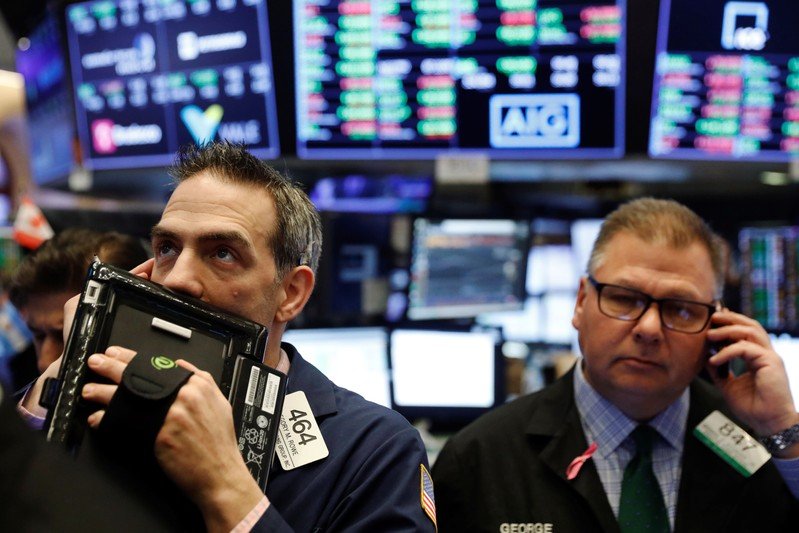Thomson Reuters
Wall Street continued to slide Thursday morning after initially finding some relief in tamer-than-expected inflation data, a day after worries about rising rates and trade tensions sparked a sharp sell-off in global markets.
After suffering its steepest drop since February in the previous session, the Dow Jones industrial average fell more than 350 points. Trading below its 200-day moving average, the S&P 500 shed nearly 1.5% and was on track to extend its longest losing streak since the 2016 election. The Nasdaq Composite was trading down 1% on the heels of its worst day since the Brexit referendum.
An anxiously-awaited inflation reading came in below expectations during premarket trading. The consumer price index rose 0.1% in September, according to the Labor Department, compared with forecasts for up 0.2%. Government data out a day earlier showed the producer price index rebounded to a seasonally adjusted 0.2% after two months of declines.
Treasury yields retreated from multiyear highs following the inflation data and as investors flocked to the relative safety of US government bonds. As the economy hums along, the Federal Reserve is expected to continue tightening after increasing rates three times this year and eight times since the financial crisis.
“The #MAGA theme is unraveling a bit over the past few sessions as two-sided risks have been injected into the US equity market,” Mark McCormick, head of North American FX strategy at TD Securities, wrote in an email. “The marked selloff in rates is the clear catalyst, though that reflects the slow-burning theme of the end of easy money.”
The Cboe Volatility Index, a measure of expected volatility on the S&P 500, fell as much as 5% to 21.07 but held close to its highest level since February. Also known as Wall Street’s “fear index,” the VIX tends to rise when investors are anxious and stocks are down.








